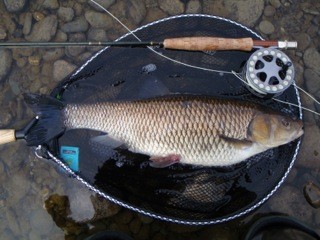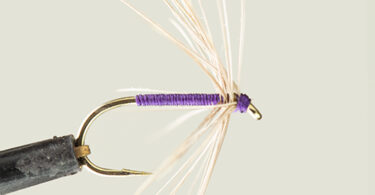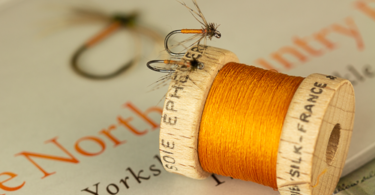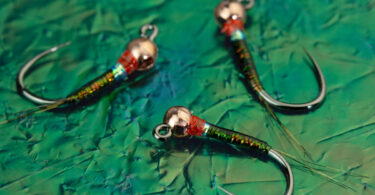
Hoyles G.Em – A legend is born
Update: I have changed the title to Hoyles Gem (G.Em for Grannom Emerger) to give this pattern the credit it deserves, I have rarely come across such an effective fly. I have tried using it after the grannom season and it still works extremely well as a general olive pattern.
I have yet to see a Grannom hatch in full swing, but I am told it is a sight to behold. In hopeful expectation I have tied some Grannom imitations and keep them in my fly box early season, since Grannom are on the wing from late March through to late April. Grannom are present in large numbers in some rivers but seem to be absent from others.
Jonathan Hoyle has sent me some examples of a Grannom Emerger pattern, which he had much success with last year fishing on the Ribble. Since they look far more attractive than my efforts and they are proven flies I have posted some photos below:

Hoyles G.Em group shot
Hook – Size 14 varivas 2200bl-bl
Body – Masterclass SLF shade 14 gammarus pale watery olive
Back rib – shiny black floss
Thorax – rabbit body
Wing – 2 natural cdc plumes
UPDATE
Since posting the blog this fly has continued to be successful for me, taking fish over different seasons, if not quite as dramatically effective as it was when the grannom were hatching.
NOV 2012
Jonathan has sent me a link to a video my Davie McPhail that shows the technique he used to make the segmented back of this fly, the link should take you straight to the part of the video where he demonstrates this technique:
I received the following e-mail from Nick Whatton, along with this picture:
‘the frame of net measures a shade over 20″ chub caught on a grannom emerger similar to the one shown on your new site.
ttfn
Nick’






Since posting this article I have had chance to test the fly during a grannom hatch. It is an amazing fly and brought fish up before there was any evidence of a hatch or any fish rising. I have a feeling this may prove itself beyond the grannom season, I haven’t seen fish respond to a fly in this way for a long time. Joel
Looks like a good Emerger pattern for a range of light coloured upwings, Pale Watery Samll DarkmOlive , nice looking fly am going to tie some to try.
I wondered if I could enquire as to how you tied this Grannom emerger. the ribbing effect onto to the main body puzzles me? do you create the slf body and then put the floss across the back? and then dub slf in a rib over the body? also is the slf pale watery colour you talk of is it also know as thing else? any help would be appreciated.
Hi Jeff the ribbing was created by tying 3 turns of dubbing then pulling the floss over it shellback style then tying 3 turns of dubbing over the floss then pulling the floss up 3 turns in front of the floss then over again shellback style and so on untill you reach the thorax. Hope this describes it? It was a technique used by davie mcphail using floss and latex shellback on a sedge nymph so I adapted it to use on a dry fly body with what I think is a great effect. Dubbing wise I used the masterclass pale watery gammarus as it was a match for the emerging adult but any light brown yellowy olive would be fine.
Hello Jonathan, Thankyou for taking the time to help out, some times it is not always easy to see a solution how to things are done and the video link and your comments help alot.Do you tie the CDC after the main body is completed, also do you leave a short CCD tag end behind the thorax area?
much appreciated for your efforts.
Hi Jeff
I tie the body first before adding the cdc. I tie the cdc in leaving the butts protruding over the body. I then dub the rabbit thorax between the butts and the wing winding back towards the body then finishing with a turn in front of the wing behind the eye to sit the wing up at the angle. I then trim the butts to leave a small tag. I have tied the wing in a similar way on a small oliver emerger pattern and leave the tag end trimmed longer and the wing shorter to suggest more of a hatching wing case breaking.
Jonathan
Jonathan,
Thank you for your help once again. I look forward to trying this pattern in the near future